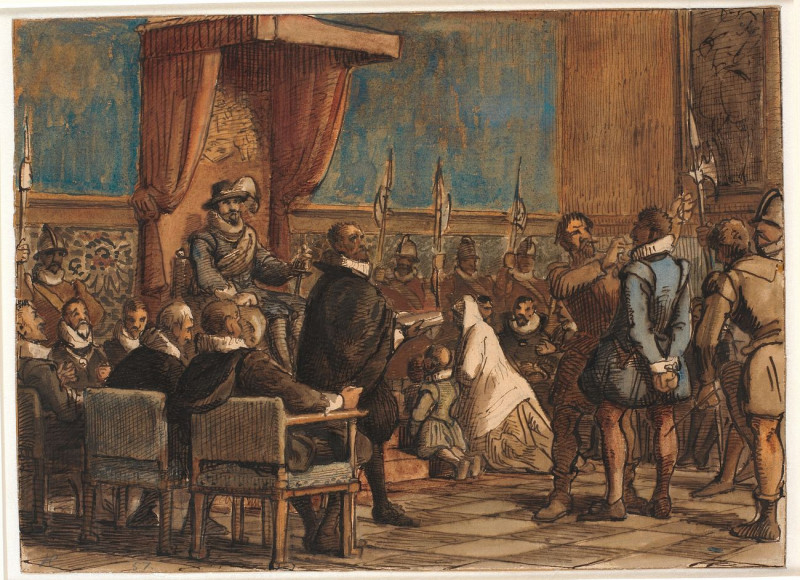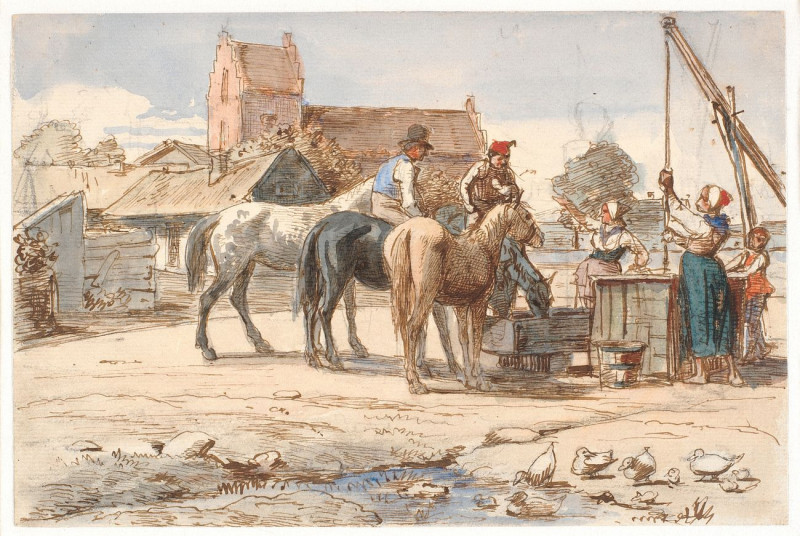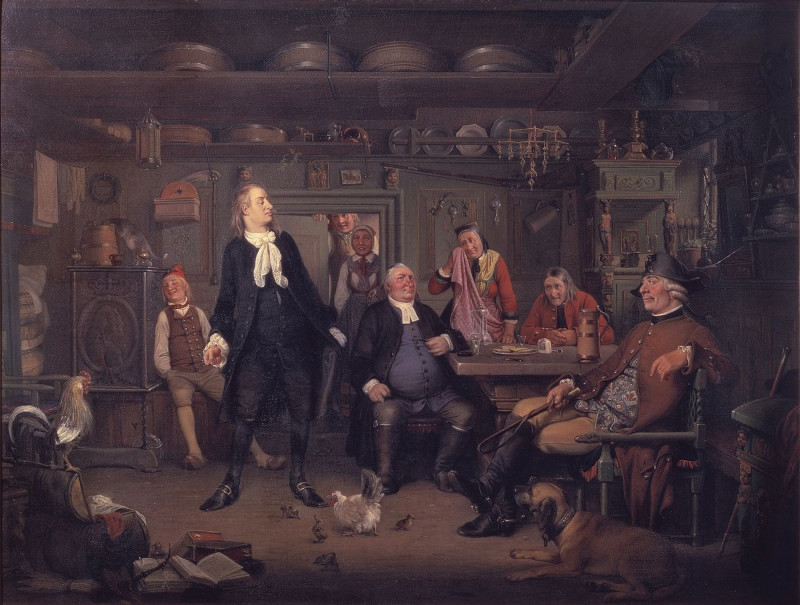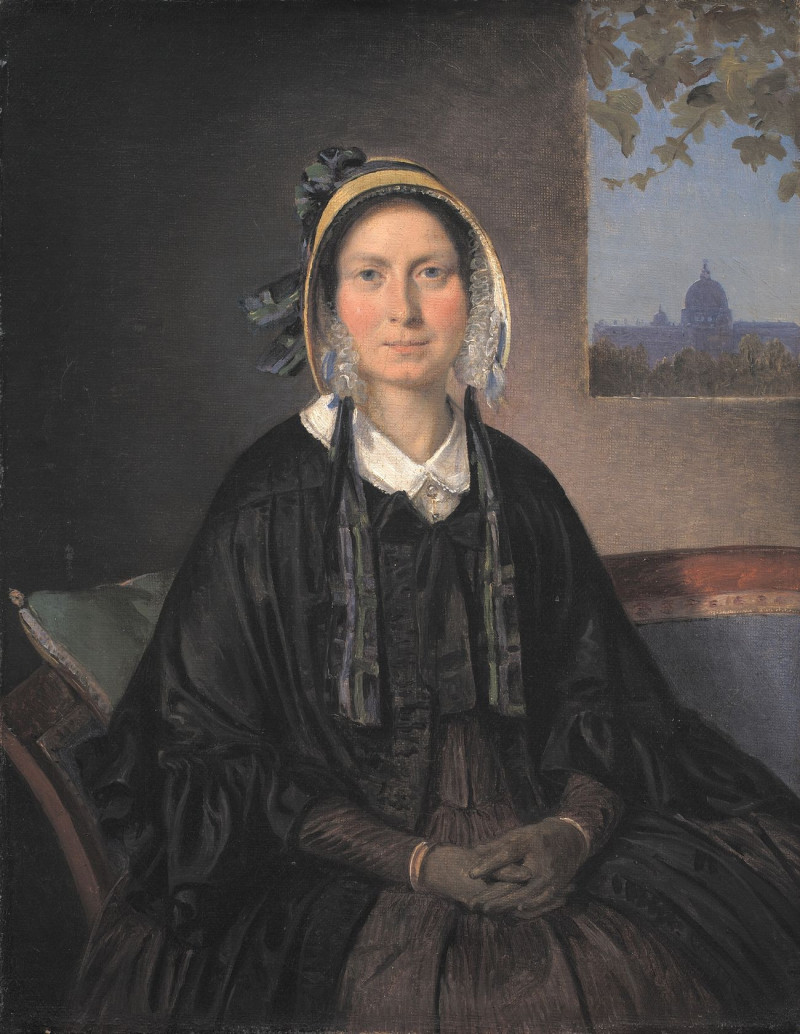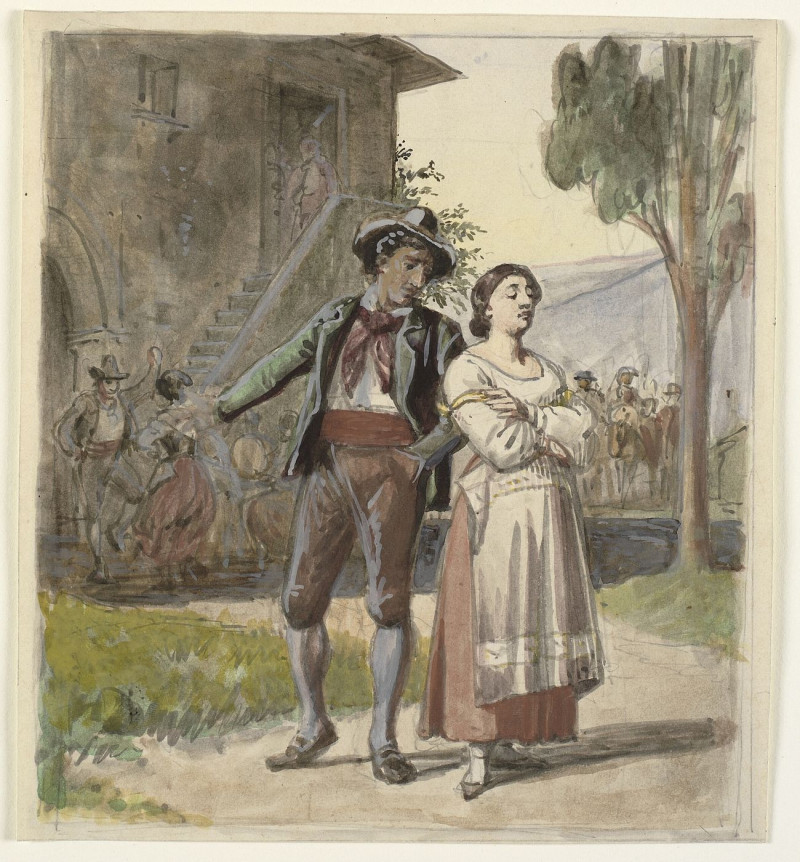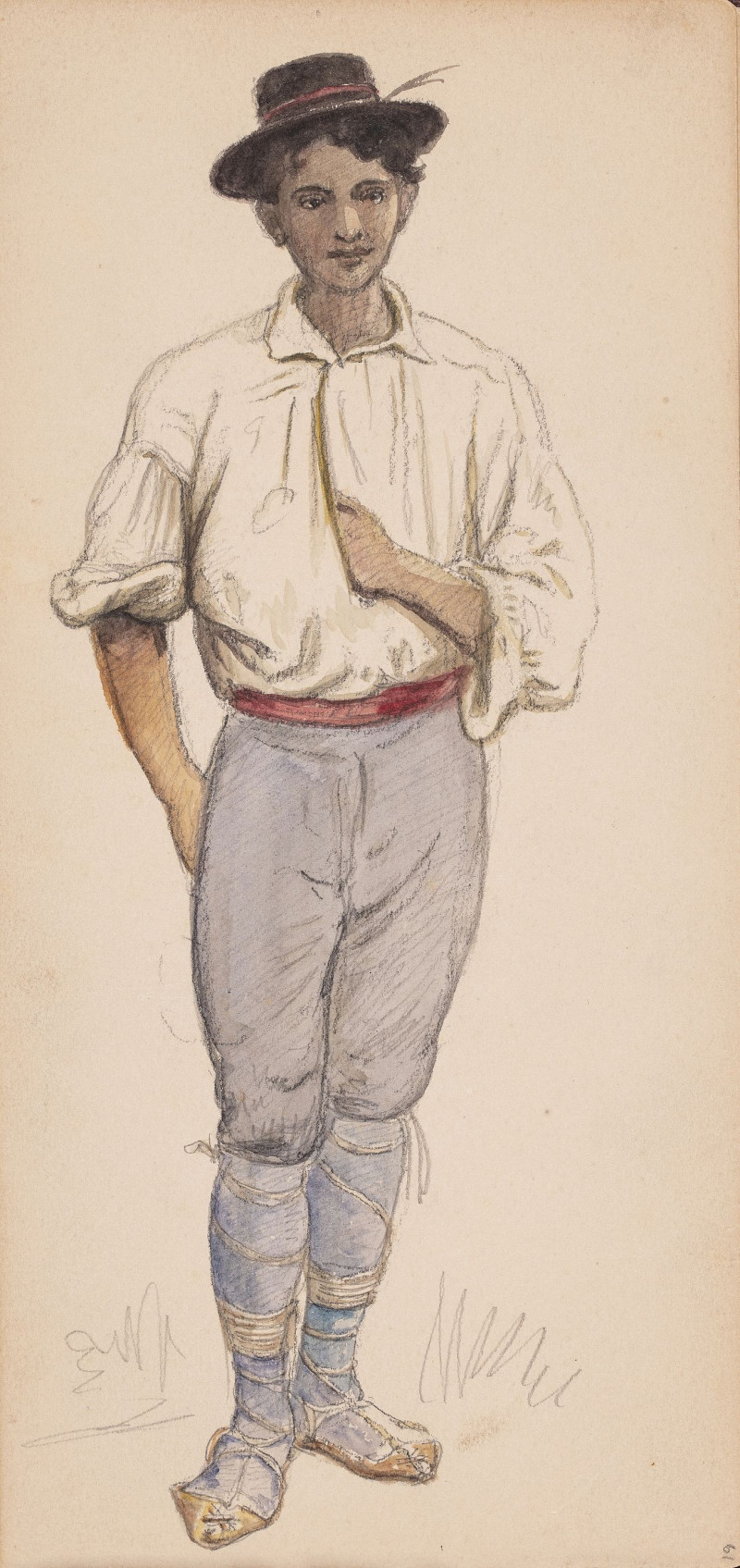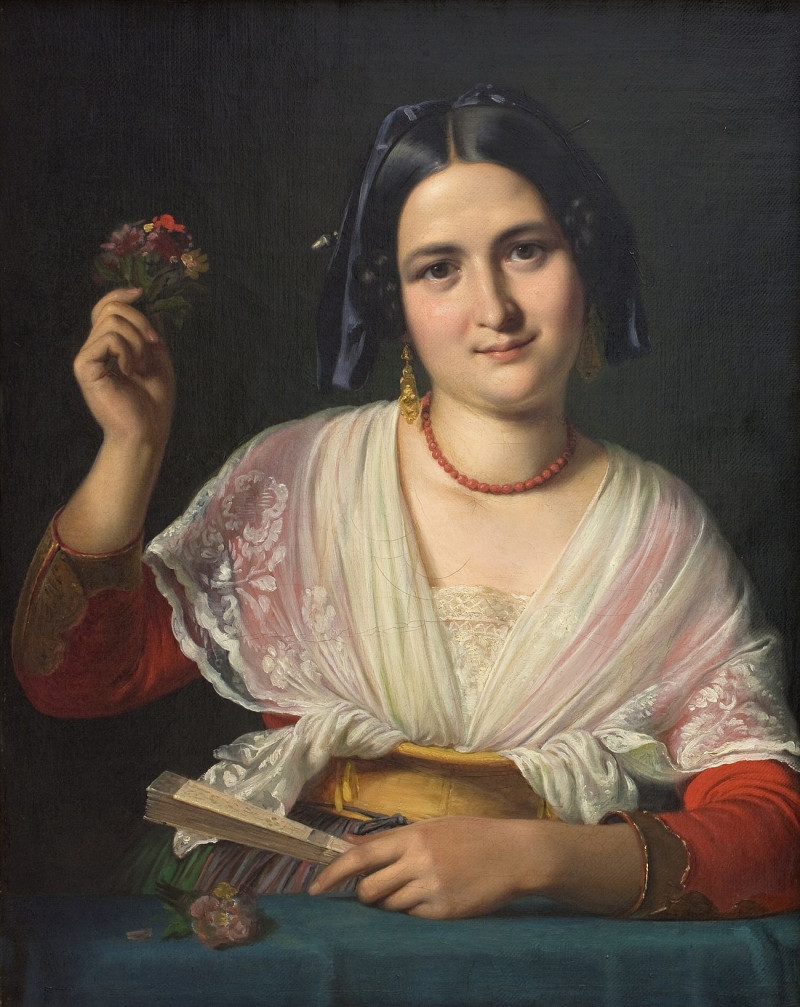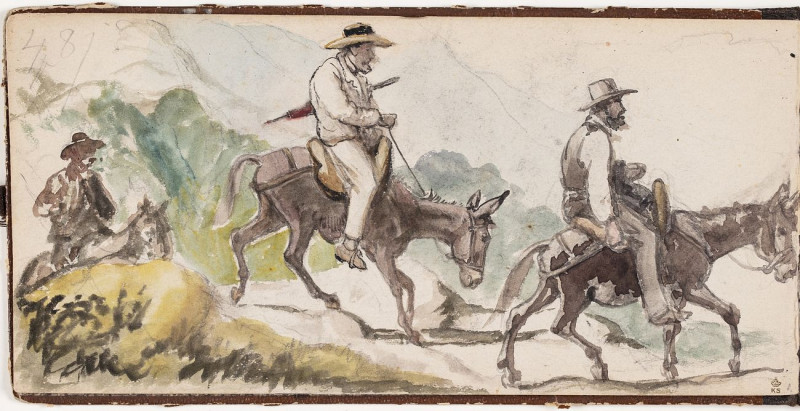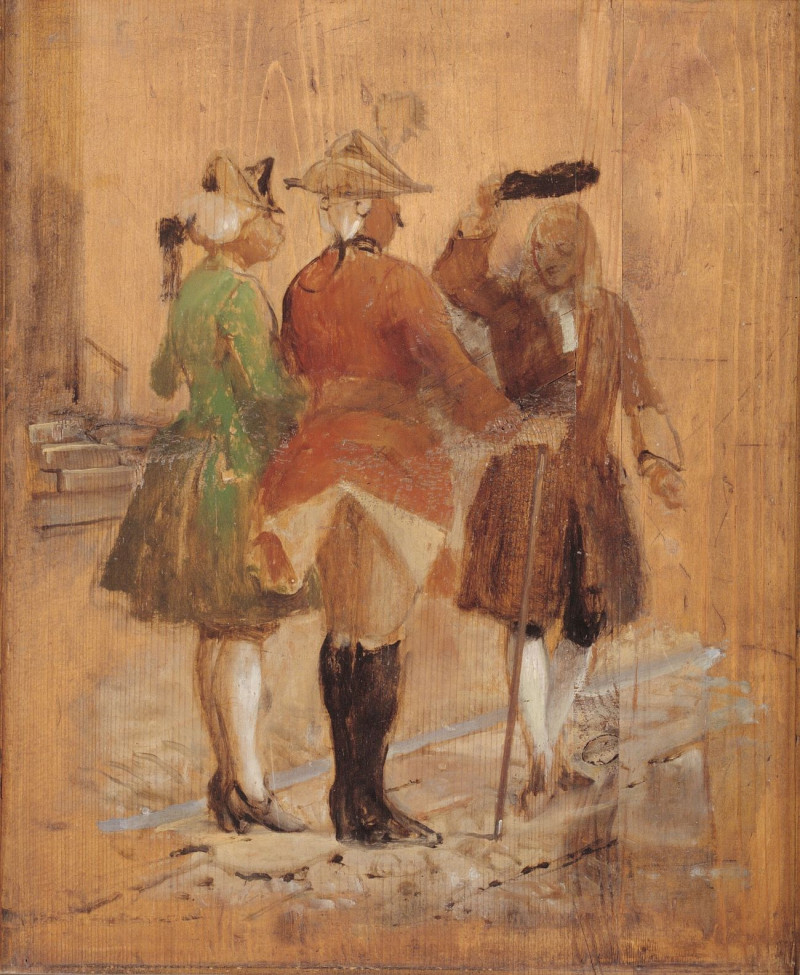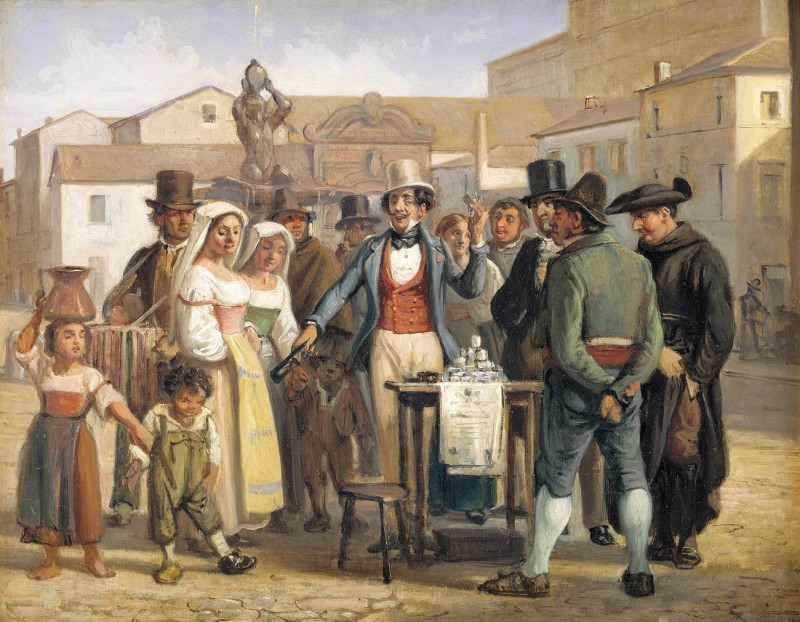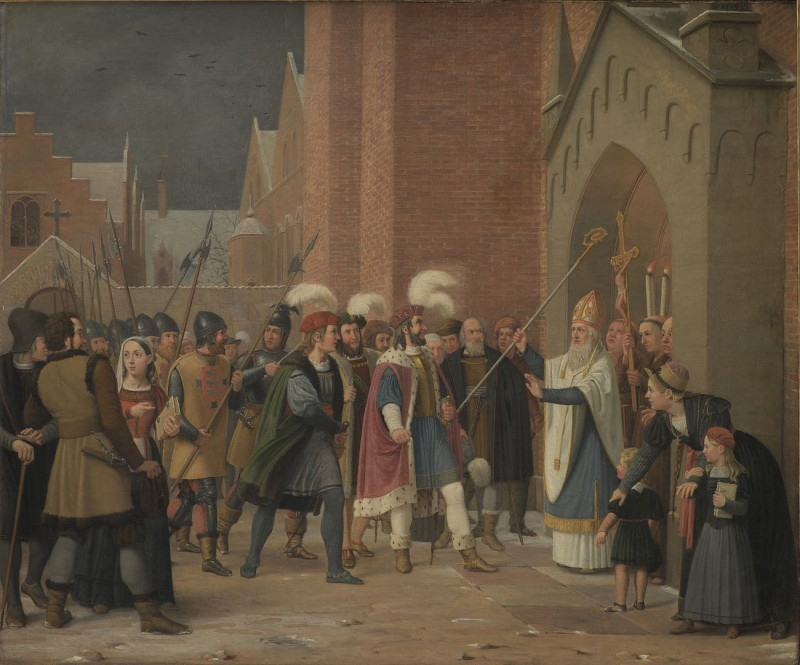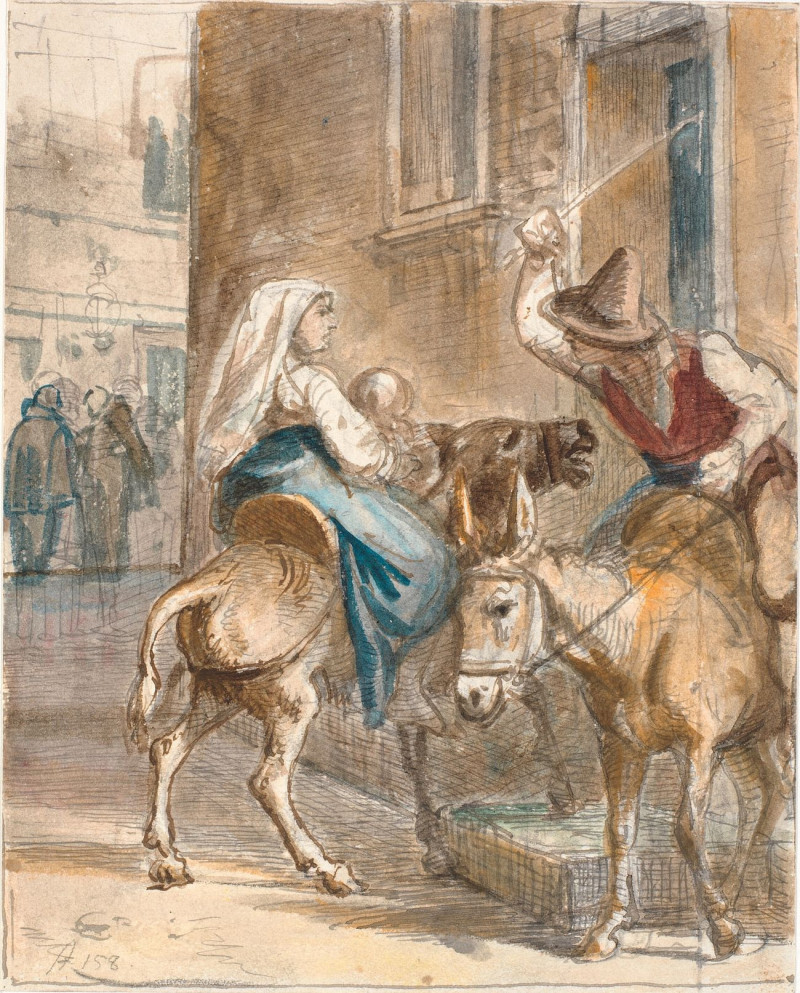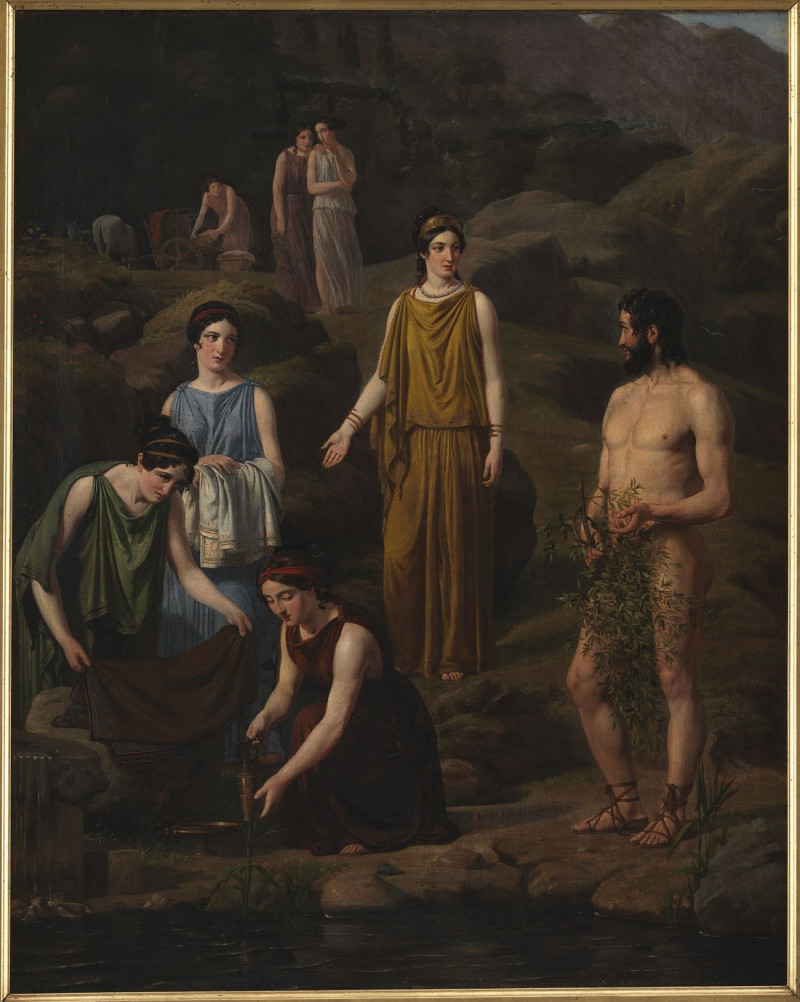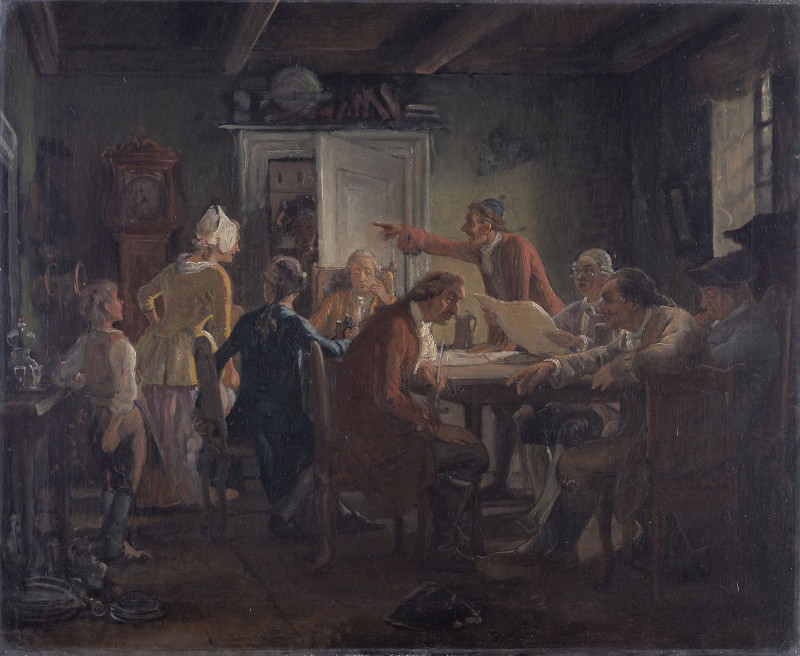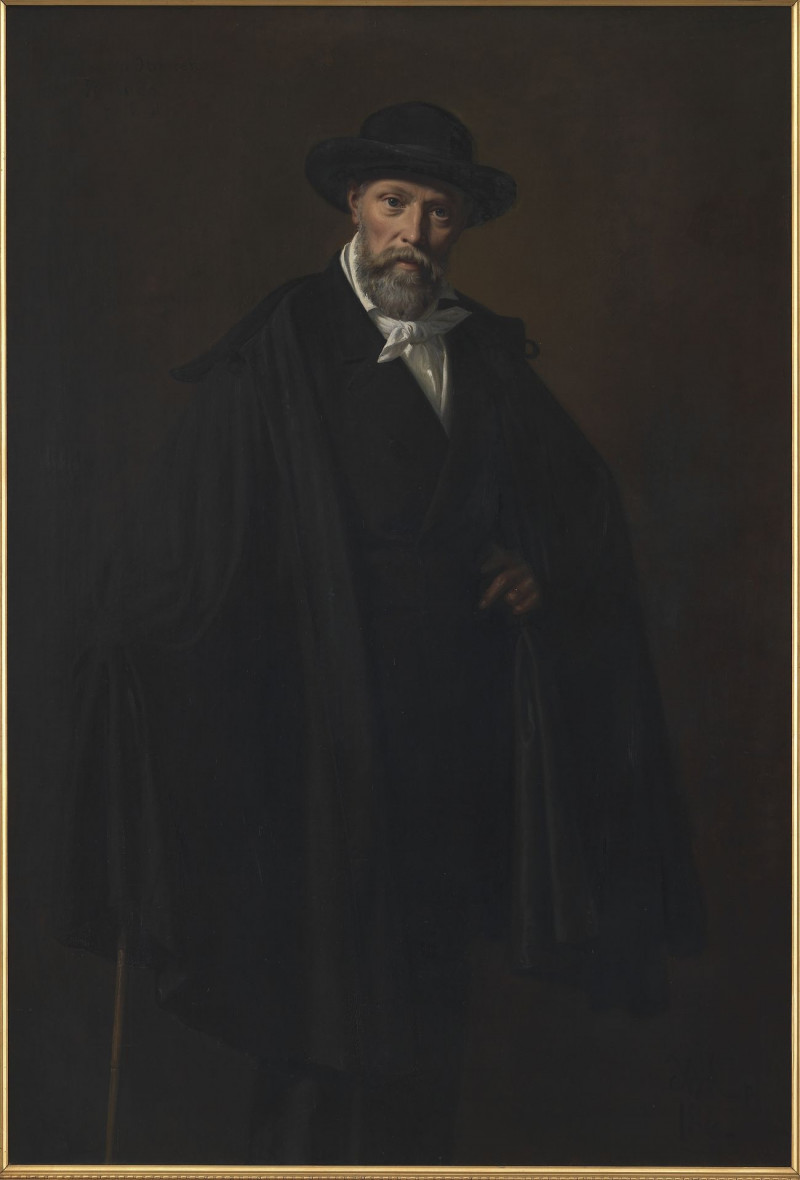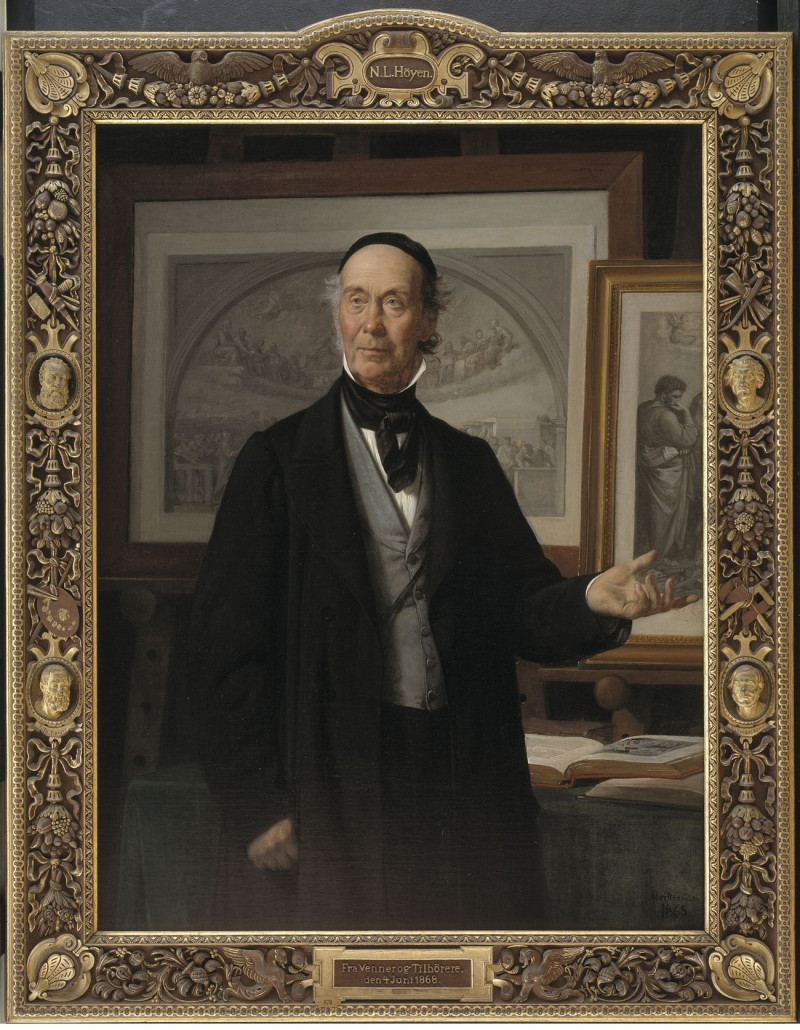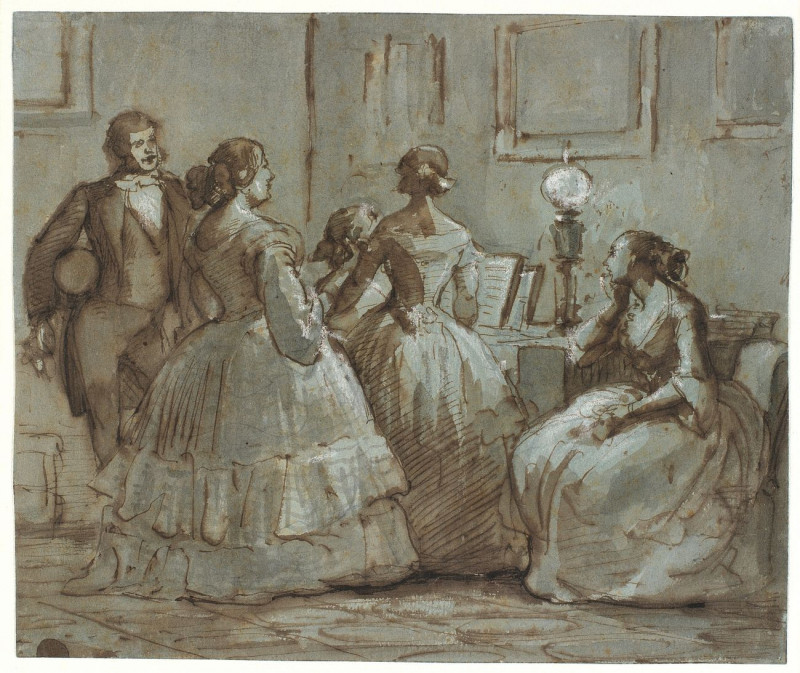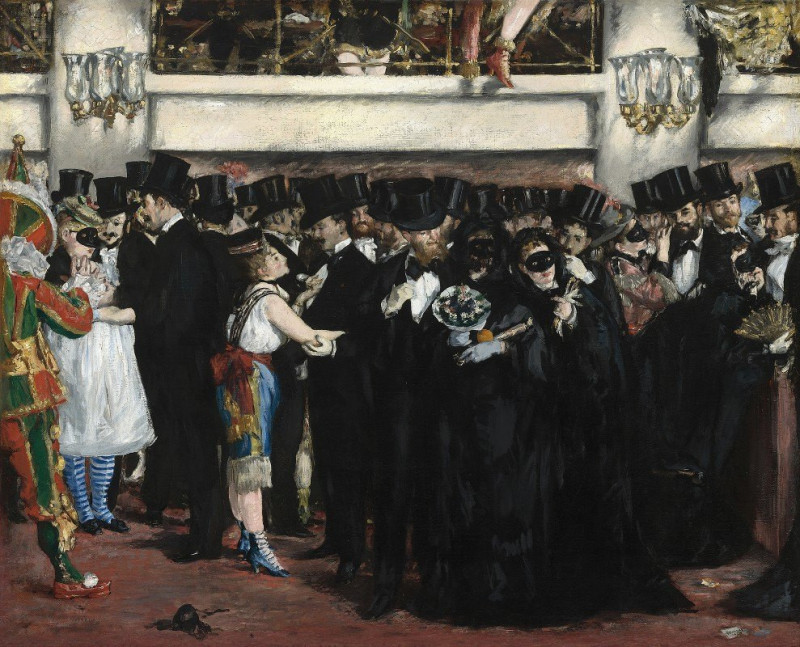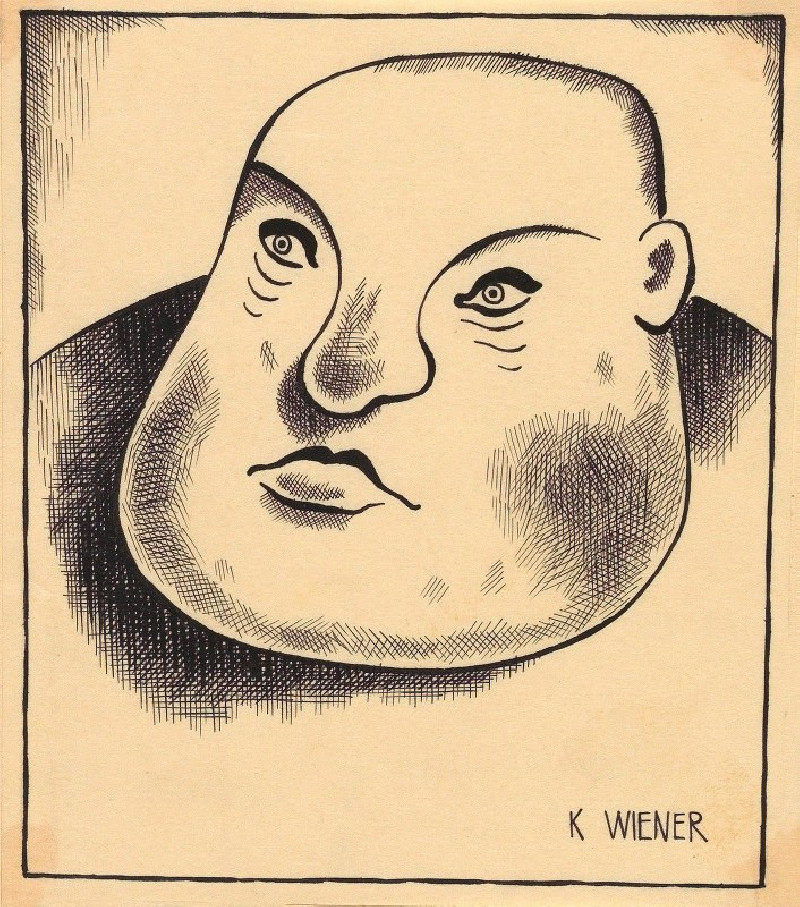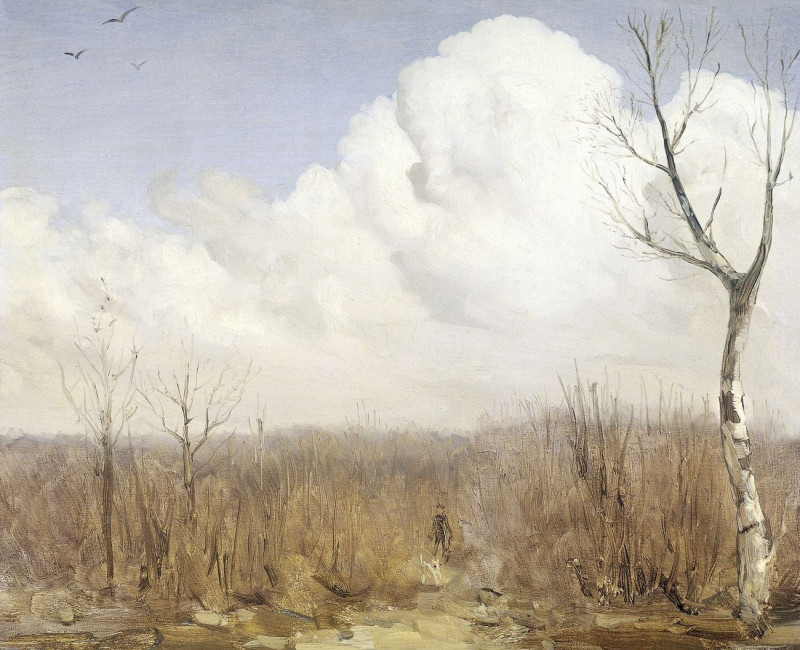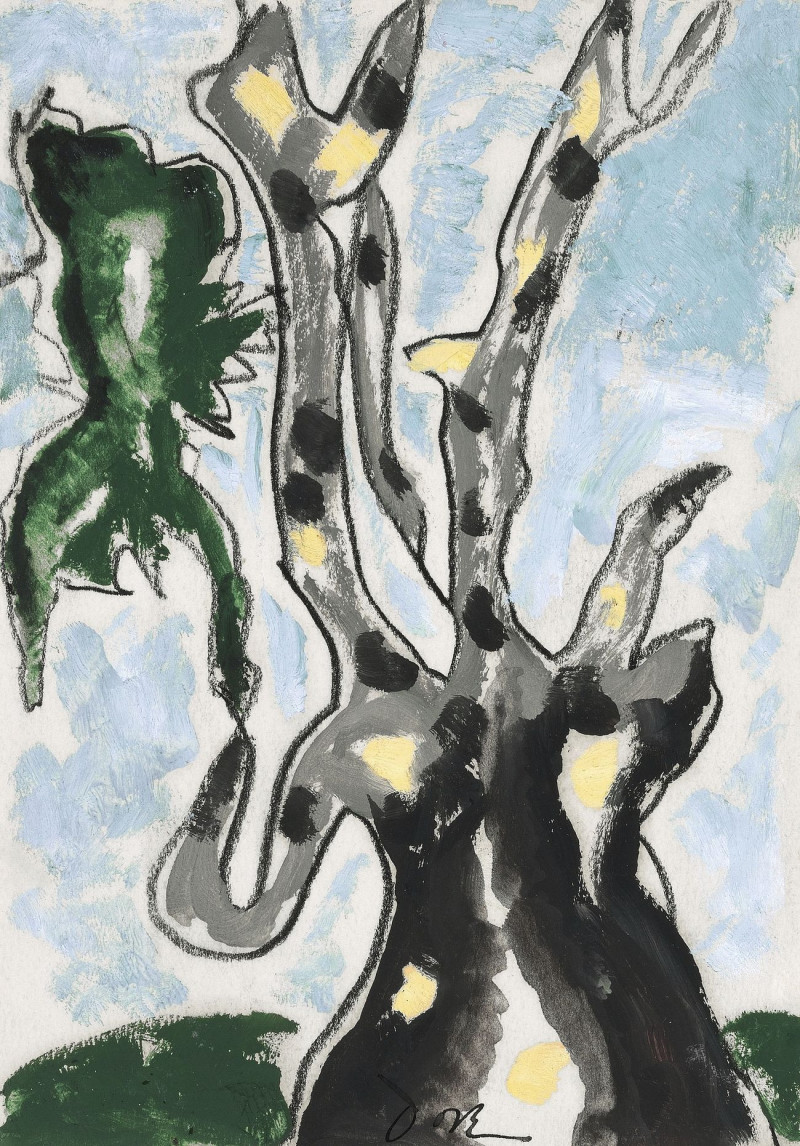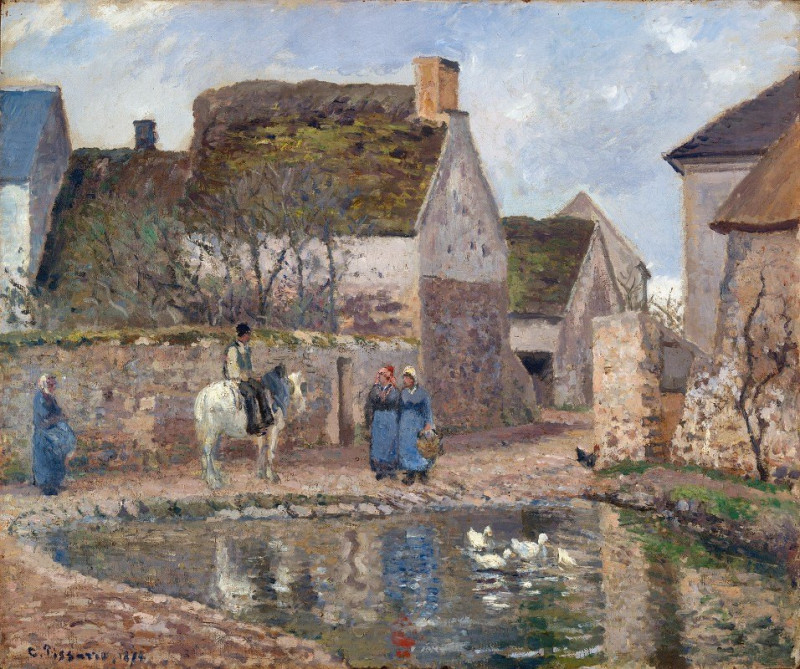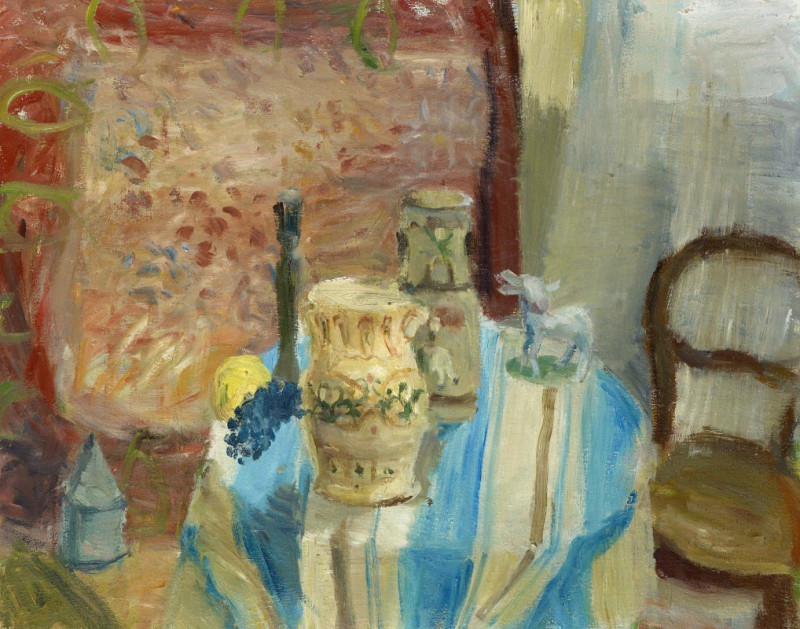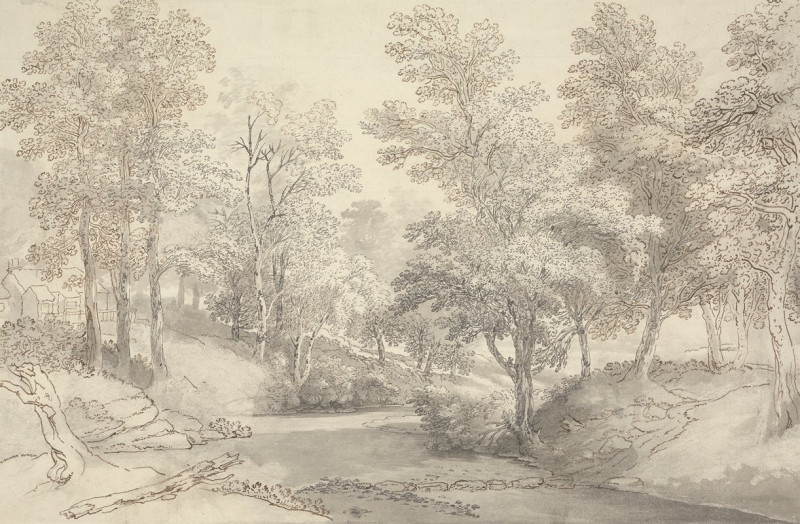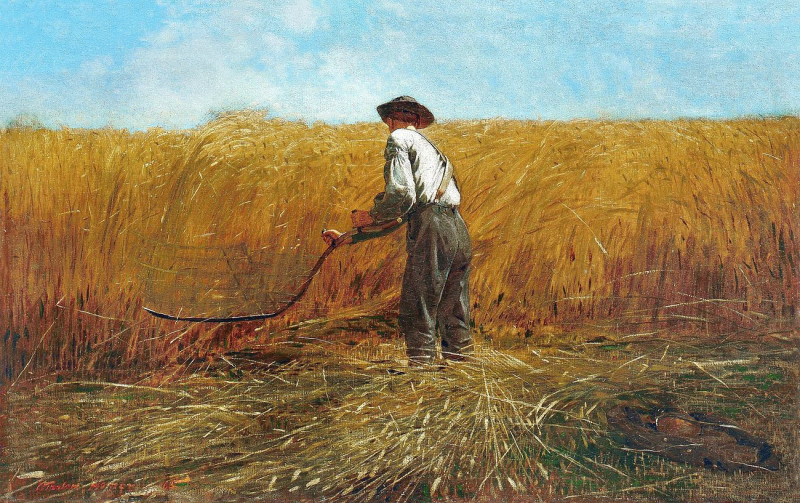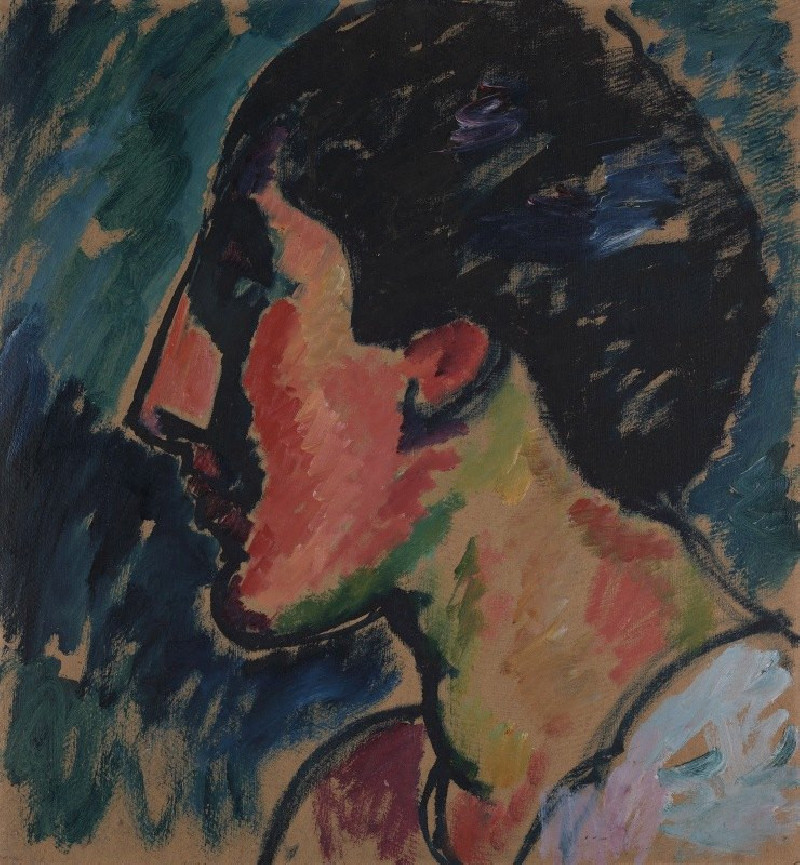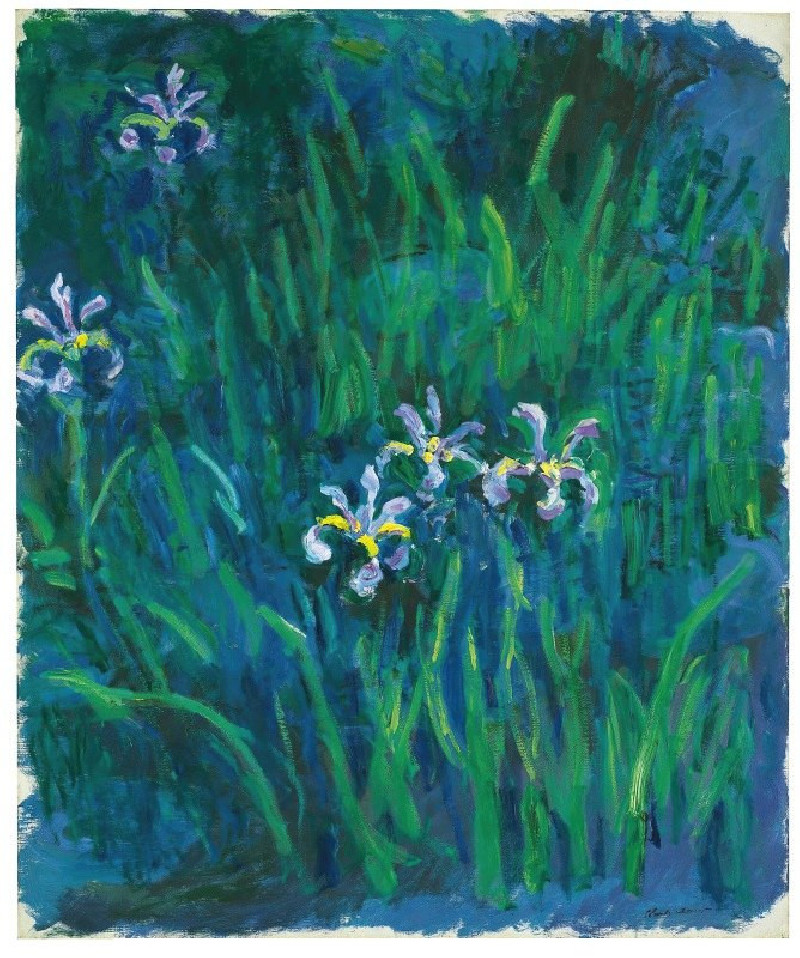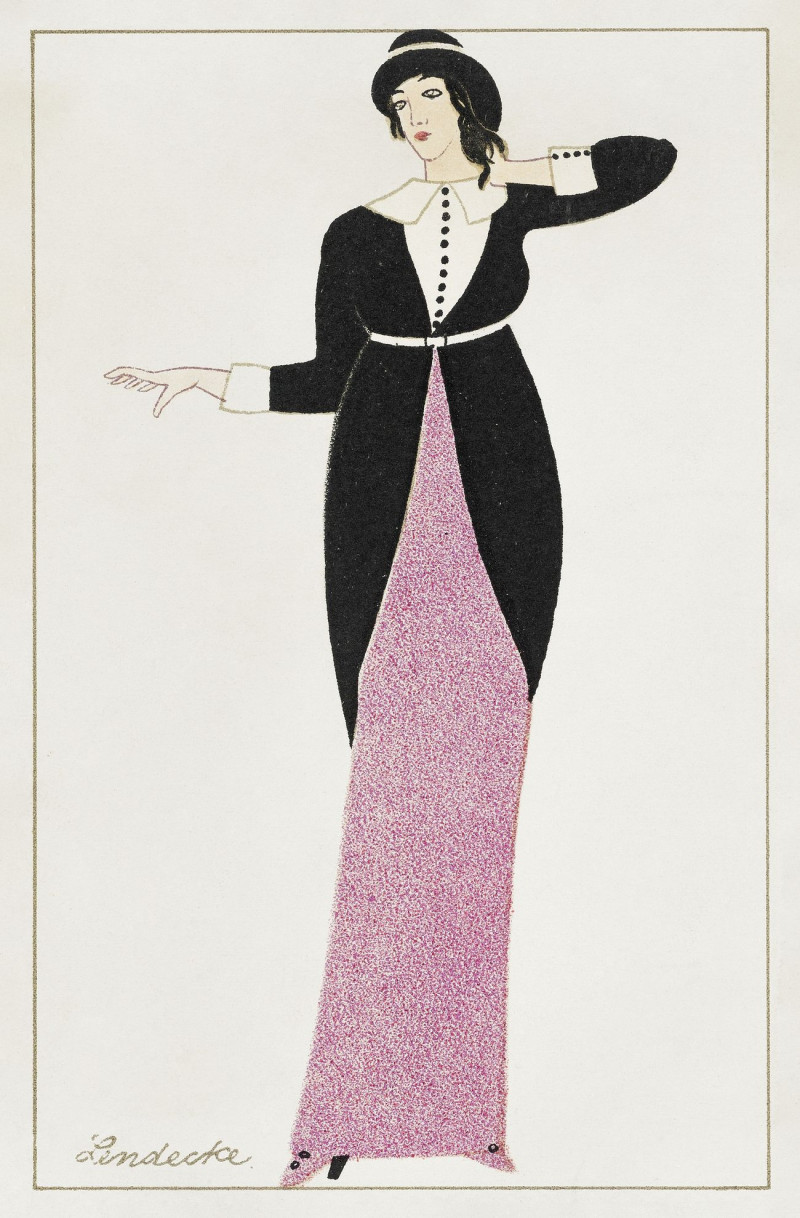Chr
Technique: Giclée quality print
Recommended by our customers
More about this artwork
This artwork by Wilhelm Marstrand, titled "Chr," is a dynamic and intricately detailed scene capturing a historical or theatrical moment. The painting features a crowded room with various figures, each distinctly characterized through their gestures and expressions.In the center of the composition, a large figure seated on an ornate throne-like chair appears to command the scene. This centrally placed figure, possibly a ruler or commander, wears an elaborate outfit with a wide-brimmed hat. His elevated position and poised demeanor suggest authority and control.Surrounding him are numerous characters who add to the narrative complexity and visual richness of the scene. To the left, individuals appear engaged in dialogue, some leaning in closely, suggesting a conversation or debate. The variety of facial expressions and body language indicates a range of emotions, possibly suggesting a council or a deliberative assembly.To the right, an interaction involving characters in motion hints at a dispute or arrest, further suggesting the tension and activity typical of a political or military setting. The presence of soldiers or guards armed with spears reinforces the idea of an official or significant event being depicted.The use of color and light focuses the viewer's attention towards the center, while the detailed rendering of costumes and settings hints at the historical period, likely set in the Renaissance or early modern era, given the style of clothing and armor.Overall, Wilhelm Marstrand's painting is a captivating portrayal of power, interaction, and historical narrative, showcasing his skill in creating vibrant, detailed historical scenes.
Delivery
Returns
Depiction of middle-class family scenes and historical paintings by Danish Golden Age artist Wilhelm Marstrand (1810-1873). Marstrand was known for his depiction of middle-class family scenes and historical paintings, with a focus on genre painting and literary subjects. He was also a skilled portraitist, often commissioned by European families to create portraits. After spending time in Italy, Marstrand began to incorporate humorous and ironic elements into his narrative paintings and illustrations, offering a unique perspective on Italian folk life.

